GTA Residential and Industrial Markets Booming While Office Market Suffers: 905 Area Outshining City of Toronto
By: Frank Clayton and Daniel Bailey
March 5, 2021
(PDF file) Print-friendly version available
Summary
In August of 2020, CUR released a blog documenting how real estate demand began shifting away from the city of Toronto (“Toronto”) to the 905 area even before the pandemic.1 This blog adds to our earlier analysis by comparing the calendar year 2020 with earlier years.
Overall, both the 905 area and Toronto residential and industrial real estate markets weathered COVID-19 remarkably well. However, the 905 area continued to increase its dominance within the GTA in terms of MLS resale and new home sales, as well as in industrial space absorption. In contrast, 2020 was a terrible year for the office space market, with Toronto being hit harder than the 905 area.
Almost two out of three GTA MLS sales occurred in the 905 area in 2020
Figure 1 shows annual MLS sales in the GTA for the city of Toronto and the 905 area from 1996 to 2020.
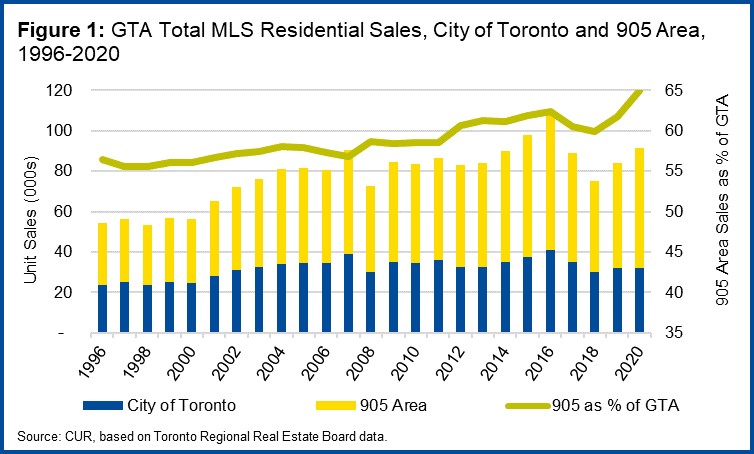
MLS residential sales in the 905 area grew significantly in 2020 despite the pandemic, while Toronto sales remained flat. As a result, the share of GTA sales in the 905 area reached a 25-year high in 2020, hitting 65% of all sales. The share of GTA sales in the 905 area had also increased in 2019.
Three of every four GTA new home sales were homes in the 905 area in 2020
Figure 2 shows annual new home sales in the GTA for the city of Toronto and the 905 area for the period from 2000 to 2020. These data were provided by Altus Group.
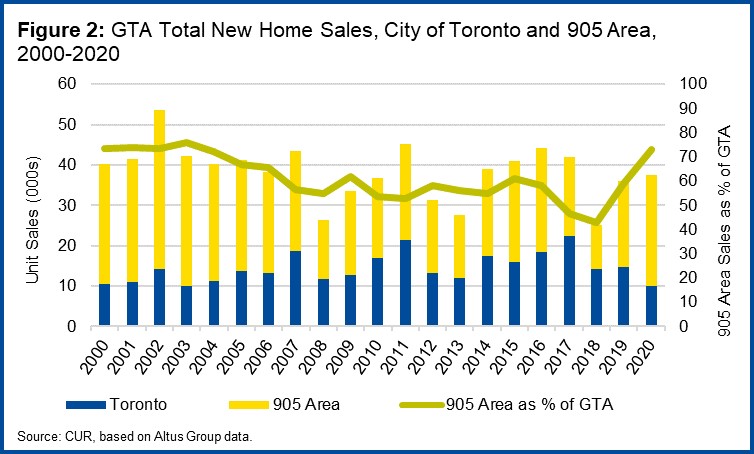
The number of new home sales in the 905 area grew for the second consecutive year in 2020, while Toronto saw the lowest number of sales since the early 2000s. This drove the 905 area sales as a percentage of the GTA up to levels last seen in the early 2000s. The long-term decline in the 905 area's share of GTA new home sales between 2003 and 2018 was the product of two factors. First, Toronto’s condo apartment boom. Second, the 905 area's planning-inspired constraints on the supply of serviced lots for new ground-related homes.
GTA population growth slackens in 2020, but 905 area share rises to almost 80%
Figure 3 shows annual population growth in the GTA from 1987 to 2020 for the 12 months ending July 1 of the indicated year, split between the city of Toronto and the 905 area.
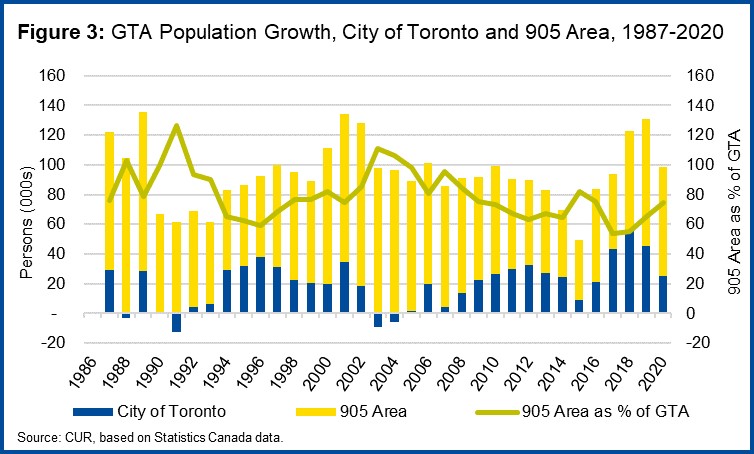
Population growth in both the 905 area and Toronto slowed in 2020 as immigration fell. This drop hit Toronto harder, causing the 905 area’s percentage of GTA population growth to increase for the third straight year.
Huge decline in GTA office space absorption in 2020 with Toronto bearing the brunt
Figure 4 shows annual office space absorptions in the GTA for Toronto and the 905 area from 1993 to 2020.
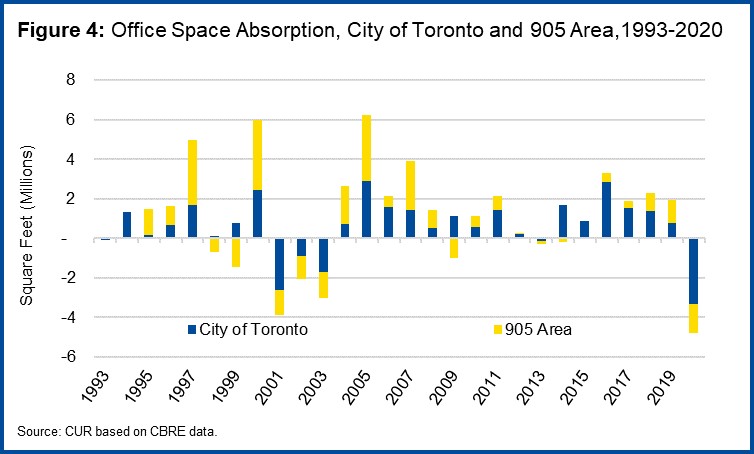
Demand for office space in the city of Toronto was in freefall in 2020, with the annual decline cancelling out the previous two years of growth. The 905 area fared better, but its absorption also fell.
Industrial space absorption in 905 area relatively unscathed in 2020
Figure 5 shows annual industrial building space absorptions in the GTA for Toronto and the 905 area from 2000 to 2020.
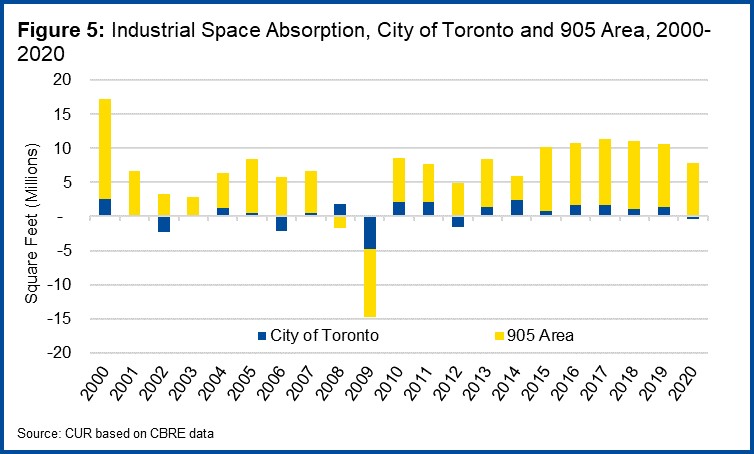
The 905 area still had considerable industrial space absorption in 2020 though it experienced a drop in industrial space absorption from 9.2 million square feet in 2019 to 7.8 million. This contrasts with nil absorption in Toronto in 2020. The need for logistical and warehouse space to accommodate the surge in on-line retail purchases was a key factor in the healthy absorption of industrial space in 2020.
Conclusion
Despite the wide-ranging impacts of COVID-19, the residential real estate market remained extraordinarily strong in the GTA in 2020 with the 905 area outpacing Toronto. The shift to the 905 area continued the pattern that began in 2019. At the same time, while the GTA industrial real estate market is weathering COVID-19 well, due to all the absorption of additional space occurring in the 905 area, the office real estate market saw absorption crumble, especially in Toronto.
Sources:
[1] The 905 area is composed of the regional municipalities of York, Peel, Halton, and Durham.
Frank Clayton, PhD, is Senior Research Fellow at Toronto Metropolitan University’s Centre for Urban Research and Land Development (CUR) in Toronto.
Daniel Bailey is Research Assistant at Toronto Metropolitan University’s Centre for Urban Research and Land Development (CUR) in Toronto.